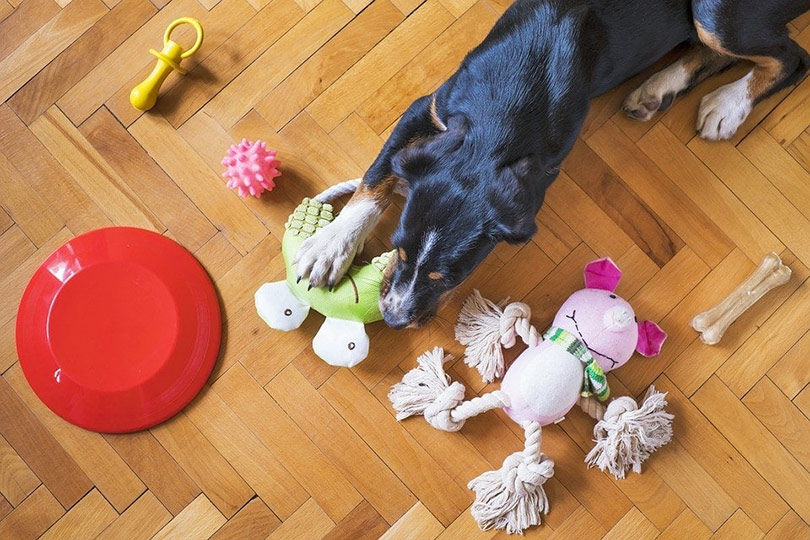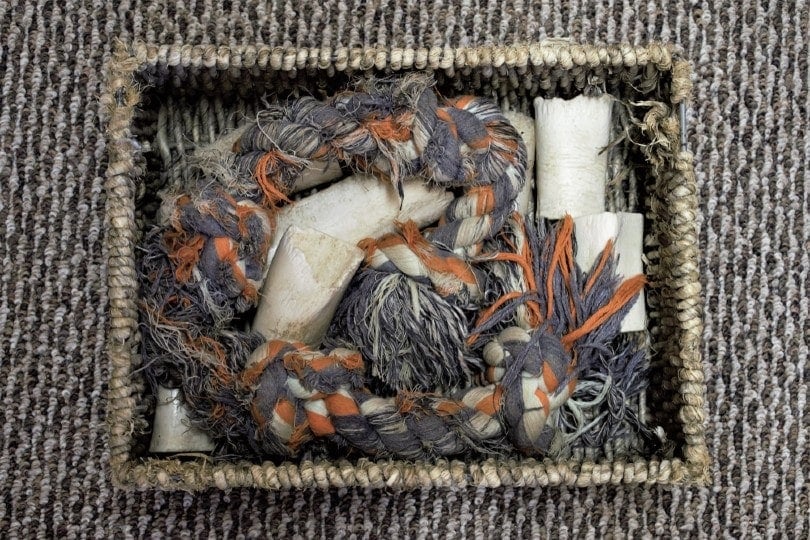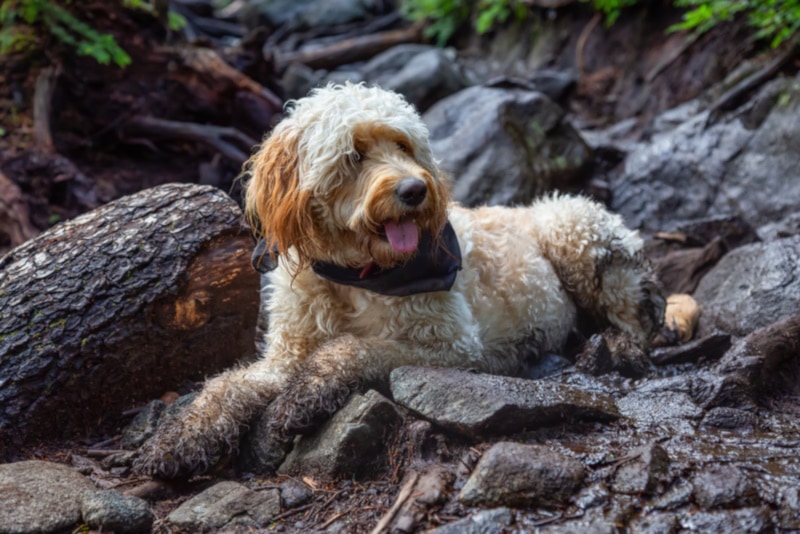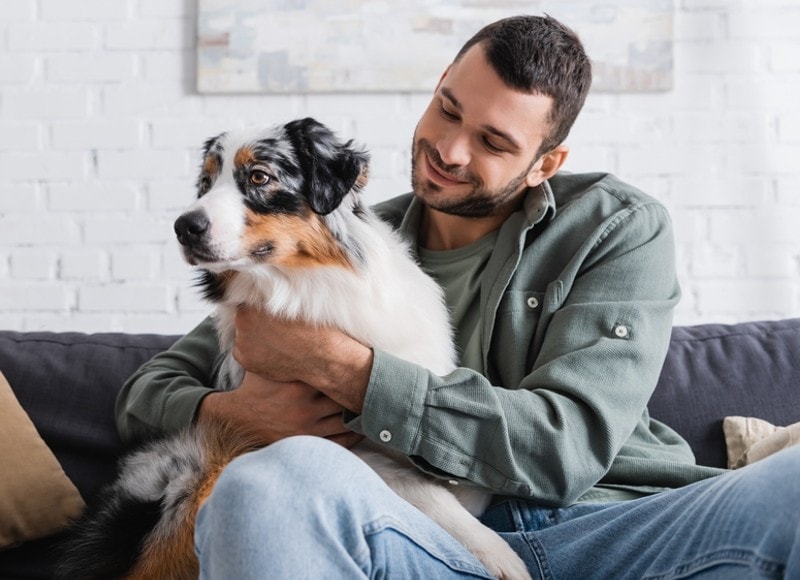How To Teach Your Dog To Put Toys Away in 7 Vet-Approved Steps

Updated on

It’s hard to resist the variety of cute dog toys you can spoil your pet with and, of course, they are fun for you and your furry friend. Your dog can be entertained for hours and benefit from the mental stimulation. But dog toys strewn across the living room can be overwhelming when stacked up with the list of house chores that need to be completed.
The thought of having a pet that tidies up after a fun session of play seems like a far-out idea, but the exciting news is that you can teach your canine to put its own toys away! We’ve compiled seven simple steps to help you teach your companion to put their toys away.
 The Goal
The Goal
The goal is to train your canine to acquire the skills to pick up one toy at a time and return it to its designated spot, and this is best done in baby steps. Each step should be taught independently, moving onto the next one when the previous one has been mastered.

What You’ll Need
It is helpful to train your dog in a quiet room so that it can concentrate and not get distracted. To get started, you will need:
- Treats: As your dog is learning a new skill, it is helpful to reward them with treats. Good quality treats will keep your pup highly motivated and excited.
- Dog Toys: You likely have a lot of dog toys lying around, but it will be helpful to train them with their favorite toys.
- Toy Box: This will be the designated area where you will want your dog to bring the toys. It can be a basket, an old box, or a Tupperware container. Initially, it’s easier to have a box with no lid. You can add a lid later and teach your dog to close it if that is preferred.
- Tips and Tricks: To make the process a little easier, here are some tips and tricks you can apply when training your dog to pick up the toys.
- Be Patient: You need to remember that this is a complex skill for your dog to learn, and if you are patient and calm, it will be a smoother and faster process for you and your dog. Dogs don’t understand the concept of a clean house, so give them time to learn and understand the skill you are trying to teach them.
- Consistency: Be consistent with your method and keep the toy box in the same spot. Moving the toy box to another location can confuse your dog.
- Enjoy the process: Have fun teaching your dogs this new skill. No matter what the outcome is, it is a great opportunity to play and bond with your companion.
The 7 Steps To Teach Your Dog to Put Toys Away
Follow these simple steps to get your canine involved in cleaning up.
1. Start with fetch

Start by teaching your pet to retrieve objects. This is a natural skill for most dogs, but if your pet is not a natural retriever, then this is a good first step. Engage with your dog by playing with their favorite toy, and when they want the toy, let them have it. You can associate the action with the word “take it” and reward your dog with a treat. Do this until your dog retrieves the toy with the command.
2. Repetition
Place the toy on the floor, point to it, and repeat the command “Take it”. Reward your dog with a treat every time they hold the dog with their mouth.
3. Increase the challenge

Now, place a few more toys on the floor. Let your dog sniff them and when a toy is approached, say “take it” and reward and praise your dog if they do.
4. Teach ‘drop it’

Incorporate the previous steps with the addition of the “drop it” command. Once your dog has learned these commands, they will be able to pick up the toy and then drop it.
5. Introduce the toy box
Now you can encourage your dog to pick up a toy and walk beside you to the toy box. Practice handing your dog the toy over the toy box, and say “drop it” when the toy is over the box. At this point, you can introduce the word” toy box.” When the toy falls in the box, reward your dog again with a treat.
6. Increase the distance

Once your dog is familiar with the commands and word association, you can begin to add some distance from the toy box. Place some toys around the toy box and when you cue your dog to pick up a toy, use the word “toy box” to encourage them to drop the toy inside the box. When your pet drops the toy in the box, reward them with praise and a treat. If your dog misses the box, repeat the step to reinforce the idea that the toys belong in the box.
7. Put it to the test!
You can now start to increase the challenge by encouraging them to pick up toys further away from the box. Once the toy is in your dog’s mouth, say “toy box” so they walk towards the designated area. Once your dog is at the toy box, use the “drop” command so it drops the toy in the box. Again, reward your pup with treats and praise. Your dog will become more experienced and may even pick up more than one toy. With a bit of patience and perseverance, your pup will happily tidy up all of the toys!
 Final Thoughts
Final Thoughts
It just takes some time and patience to help your dog acquire the skills to put away the toys, but the results will be so rewarding! Not only will the process provide bonding time for the two of you and mental stimulation for your companion, but your home will also remain tidy.
Featured Image Credit: alexei_tm, Shutterstock

 The Goal
The Goal









